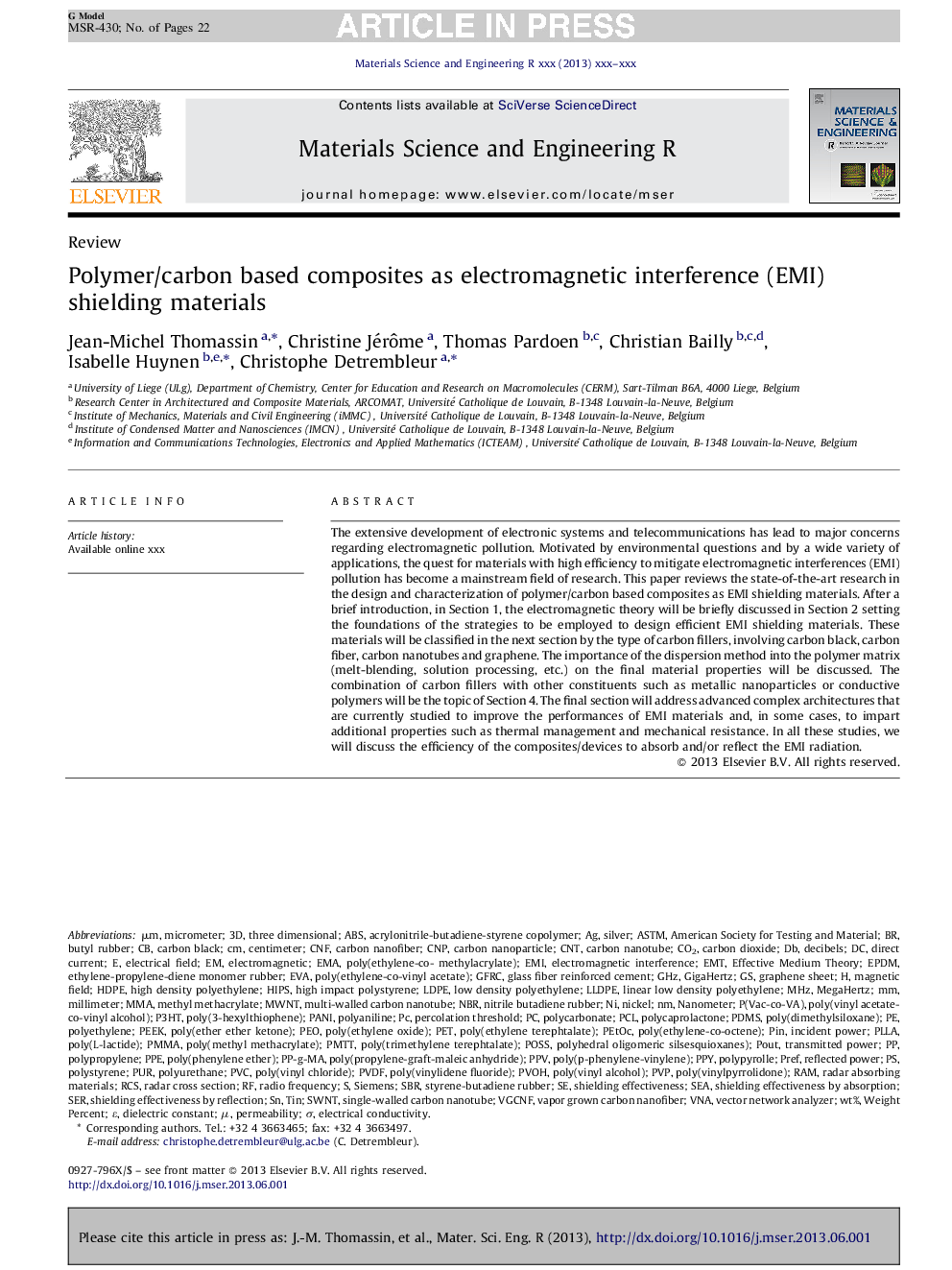| Article ID | Journal | Published Year | Pages | File Type |
|---|---|---|---|---|
| 1532511 | Materials Science and Engineering: R: Reports | 2013 | 22 Pages |
Abstract
The extensive development of electronic systems and telecommunications has lead to major concerns regarding electromagnetic pollution. Motivated by environmental questions and by a wide variety of applications, the quest for materials with high efficiency to mitigate electromagnetic interferences (EMI) pollution has become a mainstream field of research. This paper reviews the state-of-the-art research in the design and characterization of polymer/carbon based composites as EMI shielding materials. After a brief introduction, in Section 1, the electromagnetic theory will be briefly discussed in Section 2 setting the foundations of the strategies to be employed to design efficient EMI shielding materials. These materials will be classified in the next section by the type of carbon fillers, involving carbon black, carbon fiber, carbon nanotubes and graphene. The importance of the dispersion method into the polymer matrix (melt-blending, solution processing, etc.) on the final material properties will be discussed. The combination of carbon fillers with other constituents such as metallic nanoparticles or conductive polymers will be the topic of Section 4. The final section will address advanced complex architectures that are currently studied to improve the performances of EMI materials and, in some cases, to impart additional properties such as thermal management and mechanical resistance. In all these studies, we will discuss the efficiency of the composites/devices to absorb and/or reflect the EMI radiation.
Keywords
PCLPDMSHDPEPVPABSCNTASTMSWNTPVDFPPyP3HTEVAEMAEMIPPVLDPEμMCNFNBRMMACNPSBRPLLARCSPPEHIPSPOSSMWNTEPDMLLDPEPP-g-MAGFRCPVOHVNAPoly(p-phenylene-vinylene)PANIwt%percolation thresholdShielding effectivenessElectromagnetictinSEREffective medium theoryVector network analyzerelectromagnetic interferenceEMTDielectric constantDC, Direct currentpurweight percentSeadecibelsCarbon dioxideElectrical conductivityRamPEEKSiemenscentimeterthree dimensionalRadio frequencyStyrene-butadiene rubberbutyl rubberNitrile butadiene rubberMMA, Methyl methacrylateRadar cross sectionRadar absorbing materialsMHzmegahertzElectrical fieldMagnetic fieldMillimetermicrometerCarbon nanoparticleCarbon nanofiberCarbon nanotubeSingle-walled carbon nanotubeMulti-walled carbon nanotubenanometerPermeabilitySilverNickelGraphene sheetPETPoly(3-hexylthiophene)Poly(l-lactide)Poly(ether ether ketone)poly(dimethylsiloxane)Poly(phenylene ether)Poly(methyl methacrylate)PMMAPolyanilinePolyethylenepoly(ethylene oxide)Poly(ethylene terephtalate)Poly(ethylene-co-vinyl acetate)High density polyethyleneLinear low density polyethyleneLow density polyethyleneHigh impact polystyrenePoly(vinyl alcohol)Poly(vinylpyrrolidone)Poly(vinylidene fluoride)PolypropylenePolycaprolactonePolycarbonatePolystyrenePVCPolyurethaneprefPINPEOCO2Carbon blackPoly(vinyl chloride)GHzGigahertz
Related Topics
Physical Sciences and Engineering
Materials Science
Electronic, Optical and Magnetic Materials
Authors
Jean-Michel Thomassin, Christine Jérôme, Thomas Pardoen, Christian Bailly, Isabelle Huynen, Christophe Detrembleur,
